Goal of the assignment
An output device is any device used to send data. General example of the output devices are printers, screens, LEDs, motors etc.
For this assignment I am going to use Servo Motor as output device. I am going to use my final board that I have made.
I have prepared the final PCB board which I am going to use for my final project and for this assignment. The board is same as the Arduino UNO Board because it has the same IC i.e. 328p, and does all the functionality of UNO.
Steps for creating our own Satshakit is as follows:
1. I used Eagle Software for designing of my final PCB for my final project which i will be going to use for my rest of
the assignments.
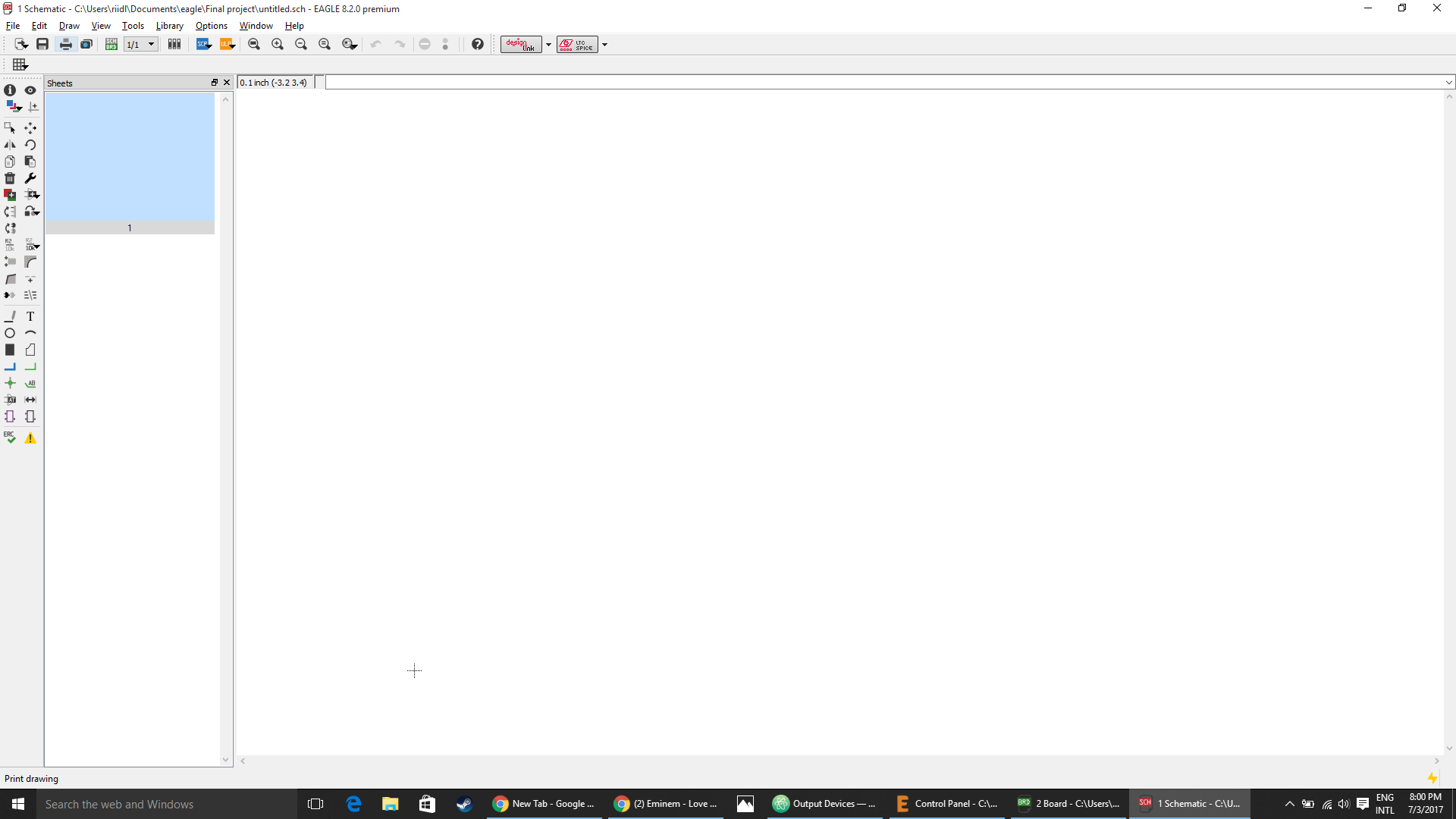
2. Then I used the ADD command to add the components to the design layout which is available under the command button
bar.
.png)
3. I add the atmega328p which is the arduino UNO chip for my final design.
.png)
4. In the similar fashion i added all the components such as resistor, capacitor, Leds, button, AVRISP SMD header pins,
etc.
.png)
5. I used the command net to join the two components pins with each other.
.png)
6. After connecting all the component with each other, to know wether all the components are connected or not with the
ERC command.
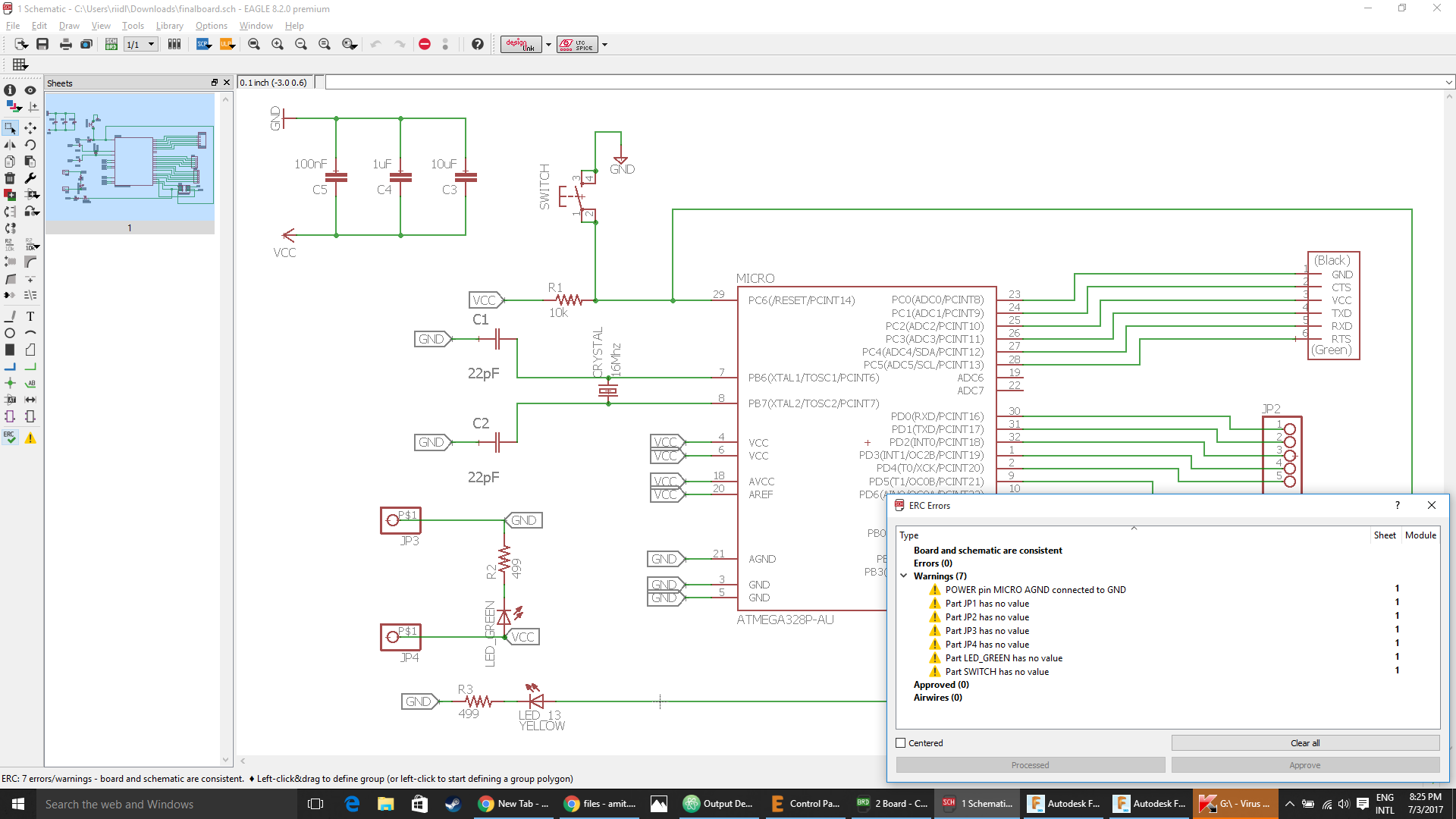
7. Since there are no error from the ERC error dailaog box we are ready to switch from the schematic file to board file.
.png)
8. In the Board version, after arranging the components in the proper place, then route the wire with the routing option available from the command button bar.
.png)
9. Before using the route option, select the ratsnet to so that the number of wires should be reduced.
10. Then use the route option to make respective connections.
.png)
11. Then export the file for fabrication. Save it in .png format 600dpi monochrome.
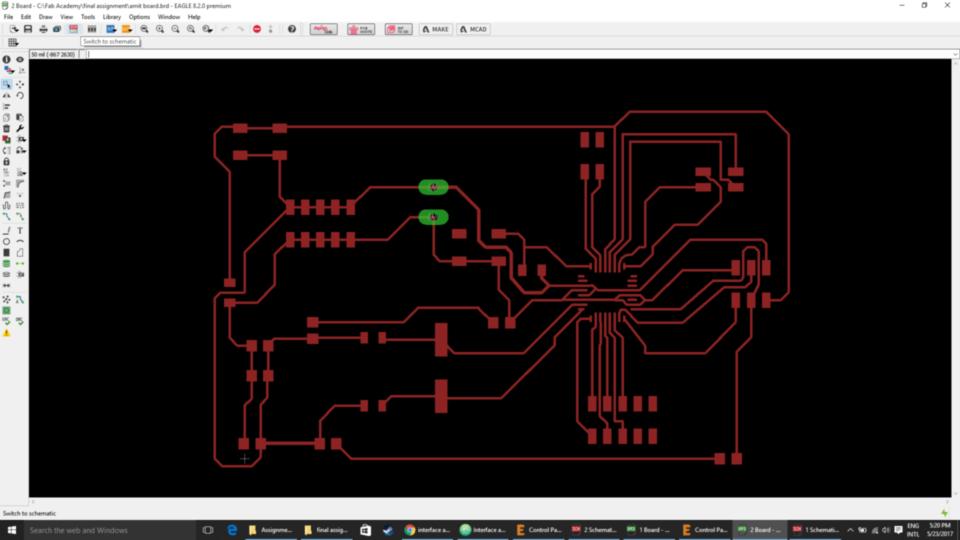
Below are the images of the final board
- PNG image of the board file which is will be given to the moldela for the PCB fabrication.
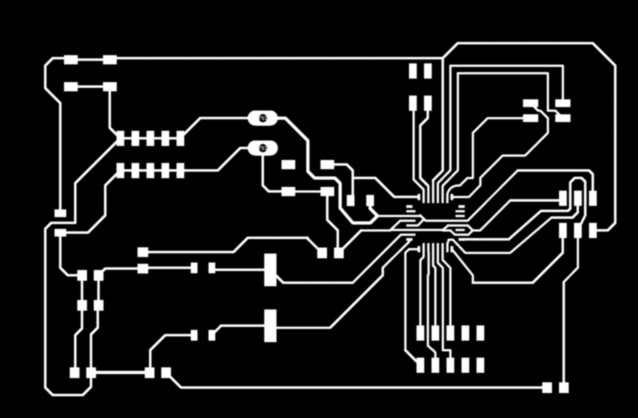
- Schematic images of the board which was made in the Eagle software.
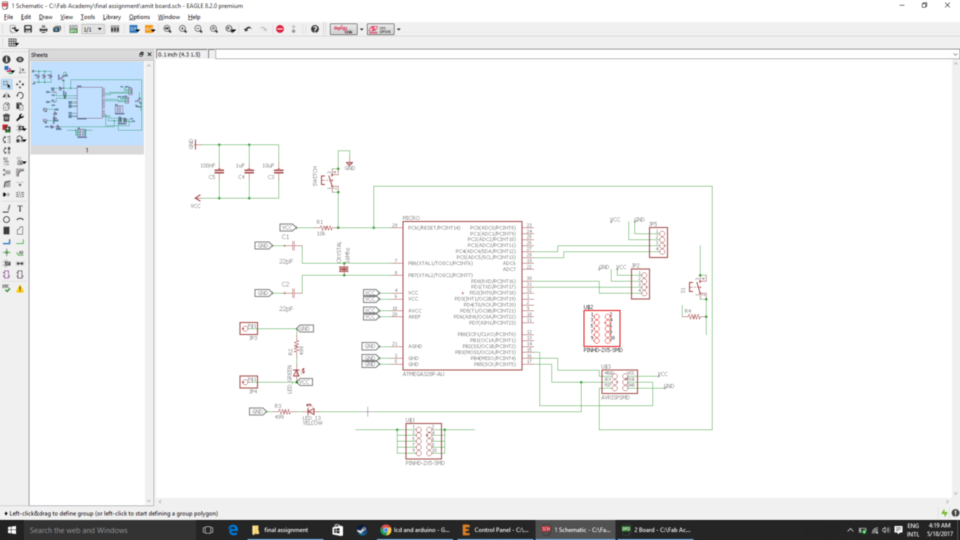
- Board images of the final PCB.
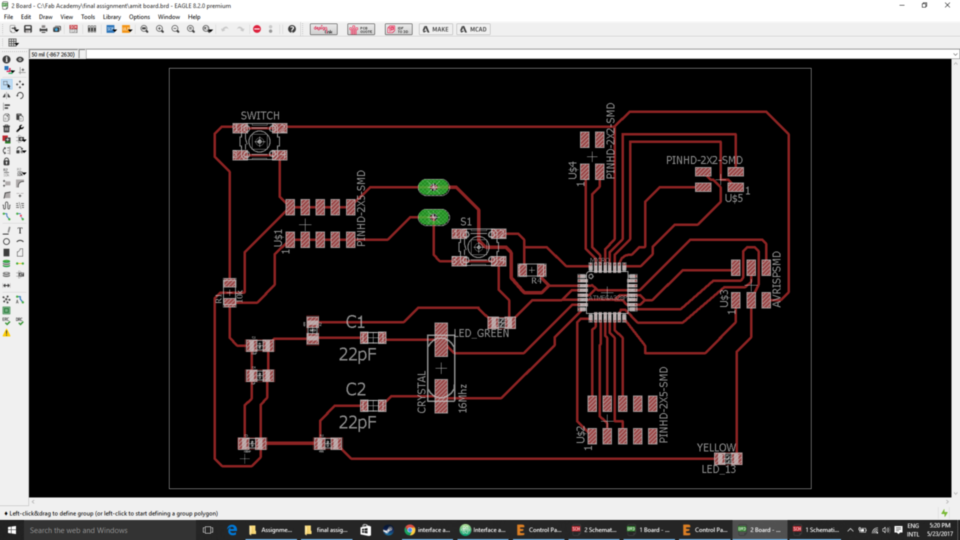

- Image of the board after milled.
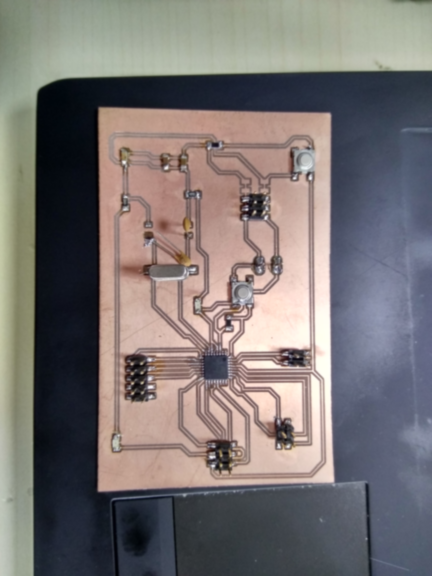
Components needed for the board:
| ATmega328P microcontroller | Capacitor C1,C2 22pF |
| C3 100uF | R1 10k ohm |
| C5 100nF | R2, R3 499ohm |
| LED 1 | LED 2 |
| 1 USB connector | AVRISP SMD |
| 1 Cystal 16MHz | 1 Switch |
| Jumpers J1 | Jumpers J2 |
| Three 6 pin connectors | one ribbon cable |
| Two single header pins | SMD Jumper J3 |
What is a servo Motor?
The servo motor is most commonly used for high technology devices in the industrial application like automation technology. It is a self contained electrical device, that rotate parts of a machine with high efficiency and great precision. The output shaft of this motor can be moved to a particular angle.
Mechanism of servo Motor:
A servomotor is a closed-loop servomechanism that uses position feedback to control its motion and final position. The input to its control is a signal (either analogue or digital) representing the position commanded for the output shaft.

Types of servo Motor:
Servo motors are classified into different types based on their application, such as AC servo motor, DC servo motor, brushless DC servo motor, positional rotation, continuous rotation and linear servo motor etc. Typical servo motors comprise of three wires namely, power control and ground.
- AC servo motor
- DC Servo Motor
- Positional Rotation Servo Motor
- Continuous Rotation Servo Motor
- Linear Servo Motor
I am going to use Continuous Rotation Servo Motor.
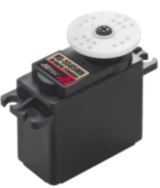
The basic code of servo motor.
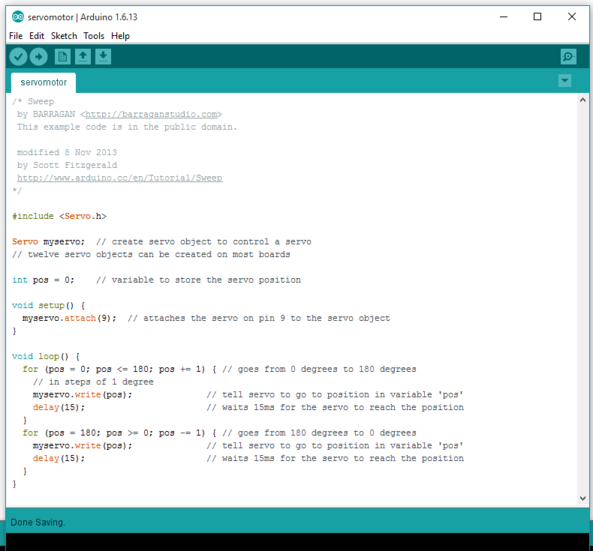
Connection circuit of servo motor where signal pin of servo motor is connected to digital pin 9 on the board.
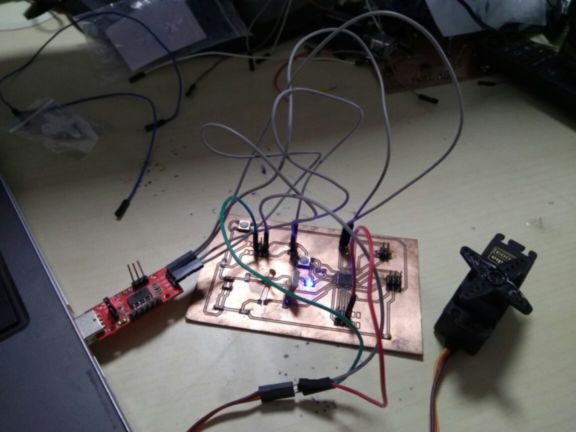
Below is the working video of Servo motor as output device.
DOWNLOAD DESIGN FILES
References
- Serial Communication with Attiny
- Converting parallel lcd to serial
- Serial UART 16x2 LCD
- Program Attiny with Arduino